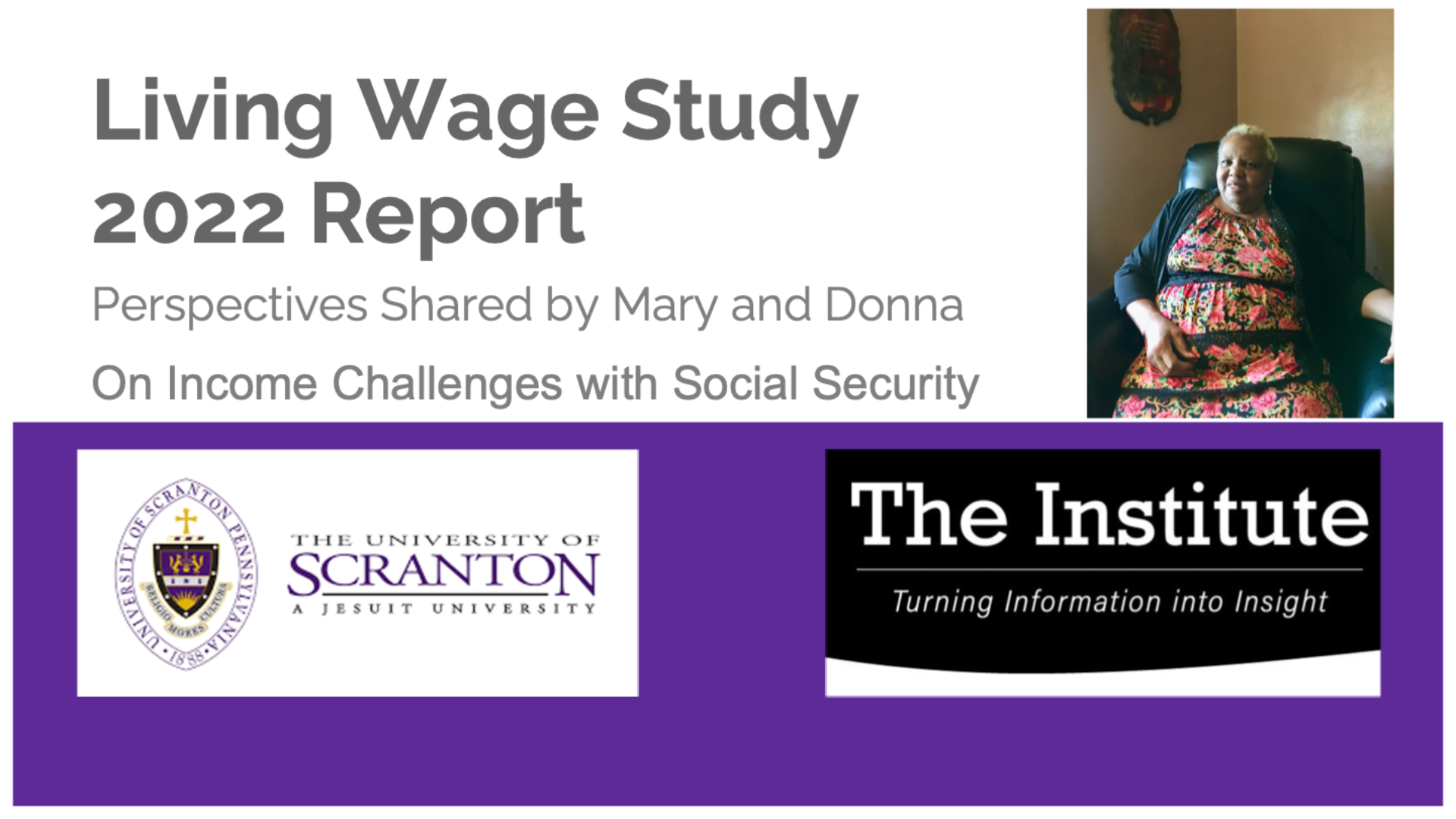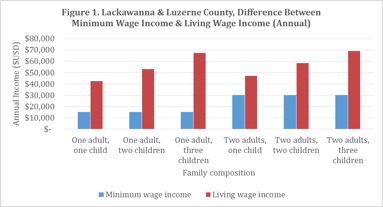Living Wage Report

Beginning in 2016, The ║├╔½tv and The Institute set out to understand better what constitutes a living wage in Northeastern Pennsylvania (NEPA). The initial 2016 Living Wage report found that the federal minimum wage of $7.25 proved inadequate to enable families in the region to reach a living wage threshold where they can meet their “essential basic needs and live a modest but dignified life.”
Living Wage Report 2022 Update
The Living Wage Study 2022, a project of The Institute and The ║├╔½tv, seeks to understand better what constitutes a living wage in Northeastern Pennsylvania using the MIT Living Wage calculator, other national and regional data, and connecting this data with input from community agencies and insights from Catholic Social Teaching. A living wage, and the broader concept of family economic security, is defined as the wage rate at which a worker, employed on a full-time basis, can reach a standard of living that meets essential basic needs and allows the individual or family to live a modest but dignified life. The 2022 Report outlines the living wage threshold for various family compositions in NEPA and compares it to previous data, details the increases in costs of living, explains some of the major challenges facing those who fall below the living wage threshold, and especially highlights contributing factors – in particular, racial disparities and the impact of the COVID-19 pandemic and related policies on economic security.
The 2022 Living Wage Report is a collaboration of and The ║├╔½tv (Office of Community and Government Relations, the Ellacuría Initiative and the Department of Political Science).
The 2022 Living Wage Report was released at a State of Scranton seminar on Nov. 29 from 11:30-1 pm. The 2022 updated reported can be accessed as a PDF document here that can be downloaded and shared.
Resources for 2022 Report:
2022 Report Overview Summary
Videos: Living Wage Report 2022: Interviews & Perspectives
Perspectives Shared by Interviewees Mary and Donna
In The News
Living Wage Report 2022: Interviews
Special thanks to interviewees, Caitlin, Yvonne, Ronnie and Jenny, and to collaborating organizations Agency for Community Empowerment, Outreach, and NeighborWorks NEPA.
Community Voices on Living Wage Study 2022: Caitlin
Community Voices on Living Wage Study 2022: Yvonne
Community Voices on Living Wage Study 2022: Ronnie
Community Voices on Living Wage Study 2022: Jenny
Living Wage Report 2019 Update
The 2019 update to the Living Wage Report shed light on how conditions changed, as families in NEPA continued to confront severe economic challenges and poverty. While there were many families that fall below the standard measure of poverty – the federal poverty line – there were also many that work full-time but earn less than a living wage. Individuals and families lack economic security in both cases; but the latter found themselves in an ambiguous situation, which this report seeks to expand upon.
In order for families to meet basic needs, living wage data accounts for the estimated costs of several categories of household spending in NEPA today: food, childcare, medical care, housing, transportation, taxes, and other expenses. This 2019 report catalogues challenges posed by various cost increases and details how the living wage threshold has increased; it includes policy recommendations rooted in Catholic Social Teaching and updated to reflect changed over the three years from the original report in 2016 to the 2019 update.
Page Contents for 2019 Report:
Report Executive Summary
University Press Release
Living Wage Nov. 2019 Seminar Discussion Summary
Video: Remarks by Scott Pilarz, S.J. and special interviews with individuals who have experienced economic insecurity
Video: Interview with Heather
Video: Interview with Billie
Additional Resources
In The News







